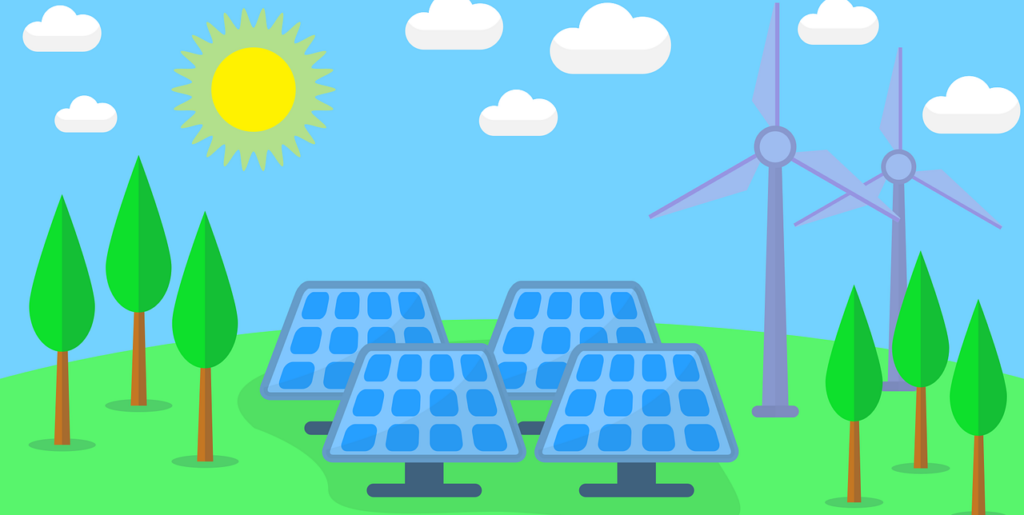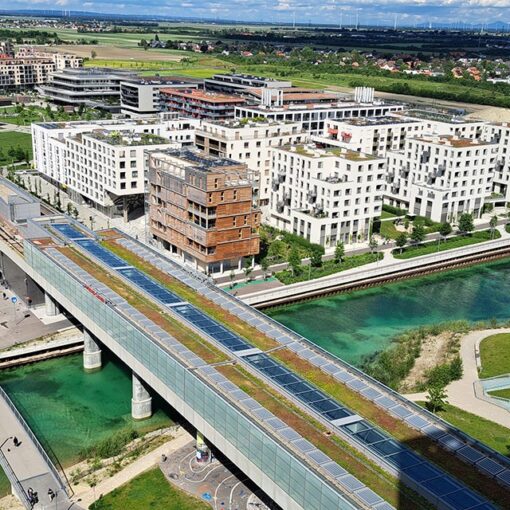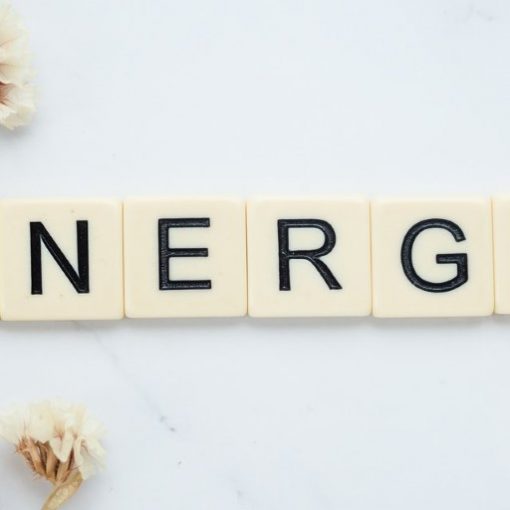For the first time, renewables were the dominant power source in Europe’s electric grid in 2020. Renewables surpassed power generation from fossil fuels by 1 %, leading to 38% of Europe electricity generated by renewables and 37% by its fossil counterpart. Albeit continuous rise of the clean energy share in the energy mix, it is still too slow to meet the new 2030 climate targets aiming to reduce emissions at least 55% from 1990 levels. The share of renewables needs to double by the end of the decade. (European Commission 2021.)
Hydropower is recognized as the largest renewable source of energy. However, solar is the main source of growth, followed by onshore and offshore wind energy. In October 2020, the International Energy Agency named solar PV the cheapest electricity ever since. In most countries, solar technology is now less expensive in comparison with new coal and gas power plants. (EKI 2020.)
A new challenge occurs when increasing the uptake of the weather-depended renewables. That is how to scale up the renewables into a running, inexpensive and efficient system. This challenge of volatile energy generation could become a great opportunity for setting up new business models. The end-users could accommodate the variability of renewable energy produced both on-site and from the grid, by deploying controllable loads (appliances operating during off-peak hours) and energy storage flexible assets (building, industries, electric vehicles). (Villa 2021.)

Multi-Source Marine Parks Boost Offshore Renewables
During the EU Sustainable Energy Week 2021, the role and capacity of renewable energy were highlighted, especially connected with Europe’s decarbonization, energy prices security, and independence from fossil fuels.
Offshore renewable energy has a great potential to make Europe a leader in clean energy. Currently, there is 12GW offshore capacity installed in the EU, aiming to scale up to 300 GW by 2050. At the same time, the co-existence of sea users needs to be taken into account, securing the biodiversity and the strategic marine spatial planning. (European Marine Observation and Data Network 2021.)
The EU-SCORES project, funded by Horizon 2020, will showcase the benefits of complementary renewable energy sources combining offshore solar PV and wave energy converters in offshore wind parks. Such a diversified energy system is more predictable and consistent, provides a higher capacity, and contributes to lower total costs as well as efficiently uses the marine space. (Spiesz 2021.)
Industrial energy transformation
In July 2021, 18 Members of the parliament together with 22 chief executives across industry urged the European Commission (EC) in an open letter to speed up the deployment of renewables. Delivering on the low-carbon energy transformation of the EU industry relies on an immense uptake of abundant supplies of clean energy, competitive energy prices, infrastructure, and innovative solutions. (Baarle 2021.)
In Päijät-Häme, Finland, two Interreg Europe projects, RESINDUSTRY – Policies for Renewable Energy Sources in Industry and SME POWER – SMEs Powering a Low Carbon Future work closely together on energy issues and the transition towards low-carbon economy. The regional cooperation is emphasised by a joint Regional Energy Stakeholder (RES) group, including members from public authorities, academia and companies. In Finland, RESINDUSTRY is managed by LAB University of Applied Sciences and SME POWER is run by Heinola City.
Author
Katerina Medkova works as an RDI specialist at LAB University of Applied Sciences and acts as a Project & Communication Manager in the RESINDUSTRY project. In Finland, RESINDUSTRY is managed by LAB University of Applied Sciences and SME POWER is run by Heinola City.
References
Baarle, D. van. 2021. Call for massive acceleration renewable energy. Industry & Energy. [Cited 1 Nov 2021]. Available at: https://www.industryandenergy.eu/sustainable-energy/call-for-massive-acceleration-renewable-energy/
European Commission. 2021. State of the Energy Union 2021: Renewables overtake fossil fuels as the EU’s main power source. Press release. [Cited 1 Nov 2021]. Available at: https://ec.europa.eu/commission/presscorner/detail/en/ip_21_5554
European Marine Observation and Data Network. 2021. EMODnet for Offshore Energy. YouTube video.[Cited 1 Nov 2021]. Available at: https://www.youtube.com/watch?v=ooGTI0KOn08
IEA. 2020. World Energy Outlook 2020 shows how the response to the Covid crisis can reshape the future of energy. Press release. [Cited 1 Nov 2021]. Available at: https://www.iea.org/news/world-energy-outlook-2020-shows-how-the-response-to-the-covid-crisis-can-reshape-the-future-of-energy
Spiesz, E. 2021. EU-SCORES: European Scalable Offshore Renewables Energy Sources. Presentation given at the Reinforcing sustainability of the offshore renewable energy sector session under the EUSEW2021 on 26 October 2021. [Cited 27 Oct 2021]. Available at: https://www.youtube.com/watch?v=D9T9sbOp_9E
Villa, M. 2021. EUSEW2021. Valorising demand-side flexibility for a cost-efficient energy transition. Presentation given at the System efficiency: The enabler of a cost-effective decarbonisation session under the EUSEW2021 on 26 October 2021. [Cited 27 Oct 2021]. Available at: https://www.youtube.com/watch?v=ty_q_-FEVNM&t=1203s
Links
Link 1. Sustainable Energy Week. 2021. EUSEW 2021 Highloghts. European Commission.[Cited 1 Nov 2021]. Available at: https://eusew.eu/eusew-2021-highlights
Link 2. Interreg Europe. 2021a. Project Summary. RESINDUSTRY. [Cited 1 Nov 2021]. Available at: https://www.interregeurope.eu/resindustry/
Link 3. Interreg Europe. 2021b. Project Summary. SME POWER. [Cited 1 Nov 2021]. Available at: https://www.interregeurope.eu/smepower/
Pictures
Picture 1. Shafin_Protic. 2021. 6272343. Pixabay. [Cited 1 Nov 2021]. Available at: https://pixabay.com/images/id-6272343/




